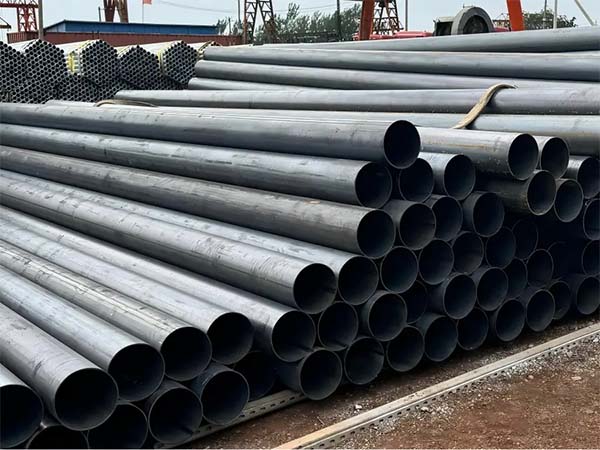The pressure resistance performance of
ERW steel pipes refers to their ability to resist internal pressure damage under specific conditions, which is mainly reflected through indicators such as the maximum allowable working pressure (MAWP), hydrostatic test pressure, and weld strength coefficient.

The determining factors of the pressure resistance performance of ERW steel pipes
The pressure resistance performance of ERW steel pipes is mainly determined by the following aspects:
1. Material of steel pipes (steel grade) : The higher the steel grade, the higher the tensile strength and yield strength of the steel, and the stronger the pressure resistance. Common materials include API 5L Gr.B, X42-X70, etc.
2. Specifications of steel pipes: Specifications include pipe diameter and wall thickness. The larger the pipe diameter and the thinner the wall thickness, the lower the allowable pressure under the same steel grade. Conversely, the smaller the pipe diameter and the thicker the wall thickness, the higher the allowable pressure will be. Therefore, the pressure resistance capacity of large-diameter thin-walled pipes is lower than that of small-diameter thick-walled pipes.
3. Weld quality: The weld seam is the weakest link in all welded steel pipes, and its quality directly affects the pressure resistance performance. Flattening test is an important means to detect the strength of welds. Qualified welds will not show signs of cracking, delamination or overheating after flattening test. In addition, weld heat treatment (such as normalizing) can refine the grain structure, reduce the hardness difference, and decrease the risk of cracking under cold expansion or pressure loads.
4. Different standard requirements: Different standards have significant differences in the pressure resistance requirements for ERW steel pipes. For example, API Spec 5L (Pipeline Steel Pipe Specification) has stricter requirements for weld quality and mechanical properties, and is applicable to high-pressure long-distance pipelines (the hydrostatic test pressure can reach 11.2MPa).
Several methods for testing the pressure resistance performance of ERW steel pipes
Hydrostatic test: The hydrostatic test is the core method for detecting the pressure resistance performance of ERW steel pipes. During the test, clear water is injected into the pipe and pressurized to the specified pressure (usually 1.5 times the design working pressure, but not exceeding 11.2MPa as specified in API Spec 5L), and the pressure is maintained for no less than 5 seconds. Observe whether there is leakage or deformation in the pipe body and welds.
Flattening test: It is used to inspect the plasticity and strength of welds and heat-affected zones. During the test, fix both ends of the steel pipe and gradually apply pressure until the two pipe walls are in close contact. During the process, there should be no signs of cracking, delamination or overheated metal at the weld seam. The production standard for ERW steel pipes requires that the flattening test must be qualified to ensure the reliability of the weld seam under pressure load.
Non-destructive testing: Online or offline testing (such as ultrasonic testing, radiographic testing) is used to detect internal defects in welds (such as cracks, slag inclusions, and incomplete penetration). These defects will reduce the load-bearing capacity of the weld seam, resulting in a decline in its pressure resistance performance. In the production process of ERW steel pipes, non-destructive testing is an indispensable step to ensure that the weld quality meets the standard requirements.
The pressure resistance advantage of ERW steel pipes
High weld quality: Modern ERW high-frequency welding combined with heat treatment process makes the weld performance approach that of the base material.
Uniform wall thickness: Cold-rolled steel strips are formed with precise wall thickness control to ensure uniform pressure distribution.
Wide application range: It is used from low-pressure water supply pipes to high-pressure oil and gas pipelines.
Compared with seamless steel pipes: In the medium and low pressure field, the pressure resistance performance of ERW steel pipes can be comparable to that of seamless steel pipes, while the cost is lower.
